Table of contents
- 6 sports tires tested 120/70 ZR 17 and 190/55 ZR 17
- Motorcycle sports tires tested in 2016
- Sports tires in the racetrack test
- Sports tires in the wet test
- Sports tires in country roads and everyday tests
- This is how MOTORRAD tests
- MOTORCYCLE final scoring
- Bridgestone S 21
- Continental Sport Attack 3
- Dunlop Sportsmart 2
- Metzeler Sportec M7 RR
- Michelin Pilot Power 3
- Pirelli Diablo Rosso III
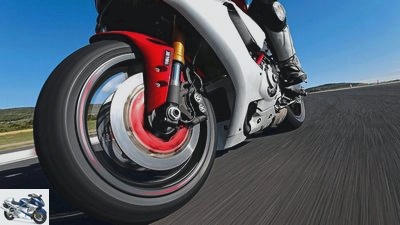
markus-jahn.com
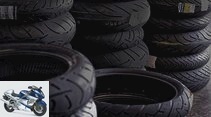
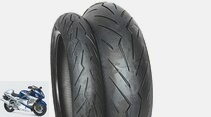
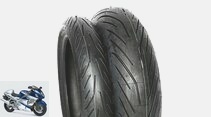
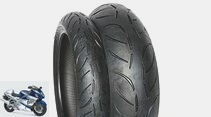
18th pictures
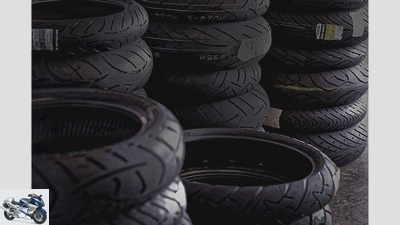
markus-jahn.com
1/18
Motorbike sports tires in the dimensions 120/70 ZR 17 and 190/55 ZR 17 in the test.
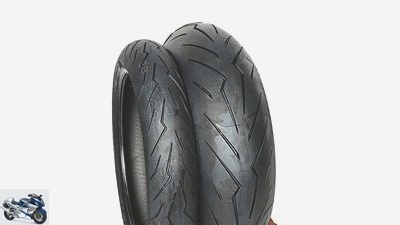
markus-jahn.com
2/18
Motorbike sports tires in the dimensions 120/70 ZR 17 and 190/55 ZR 17 in the test.
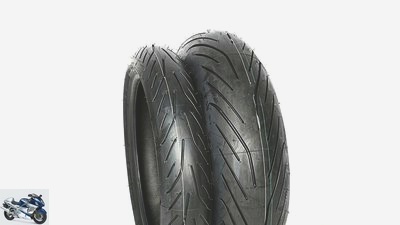
markus-jahn.com
3/18
Motorbike sports tires in the dimensions 120/70 ZR 17 and 190/55 ZR 17 in the test.
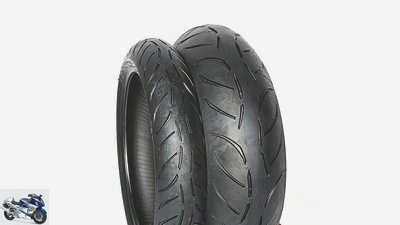
markus-jahn.com
4/18
Motorbike sports tires in the dimensions 120/70 ZR 17 and 190/55 ZR 17 in the test.
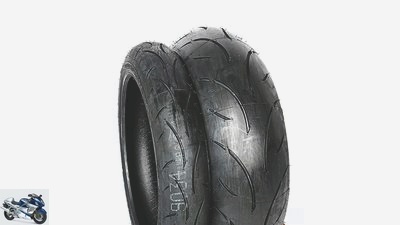
markus-jahn.com
5/18
Motorbike sports tires in the dimensions 120/70 ZR 17 and 190/55 ZR 17 in the test.
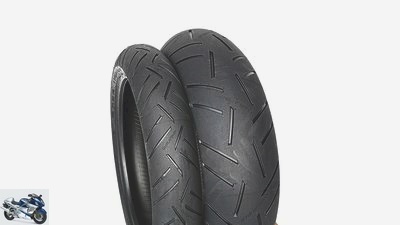
markus-jahn.com
6/18
Motorbike sports tires in the dimensions 120/70 ZR 17 and 190/55 ZR 17 in the test.

markus-jahn.com
7/18
Motorbike sports tires in the dimensions 120/70 ZR 17 and 190/55 ZR 17 in the test.
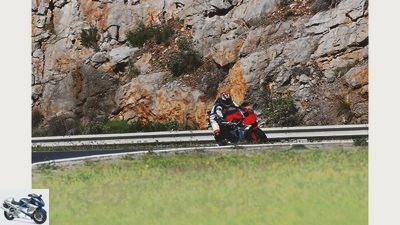
markus-jahn.com
8/18
Motorbike sports tires in the dimensions 120/70 ZR 17 and 190/55 ZR 17 in the test.
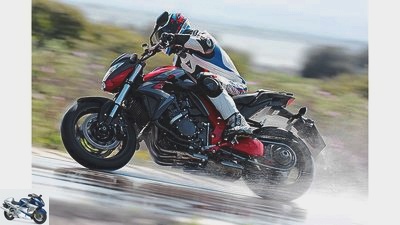
markus-jahn.com
9/18
Motorbike sports tires in the dimensions 120/70 ZR 17 and 190/55 ZR 17 in the test.
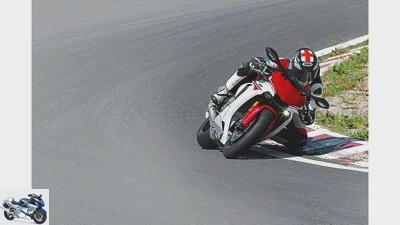
markus-jahn.com
10/18
Motorbike sports tires in the dimensions 120/70 ZR 17 and 190/55 ZR 17 in the test.
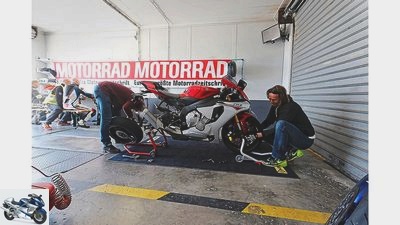
markus-jahn.com
11/18
Motorbike sports tires in the dimensions 120/70 ZR 17 and 190/55 ZR 17 in the test.
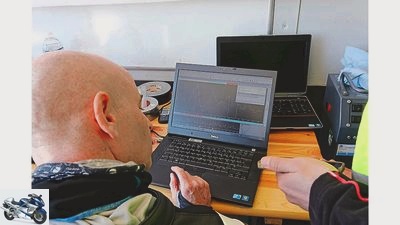
markus-jahn.com
12/18
Motorbike sports tires in the dimensions 120/70 ZR 17 and 190/55 ZR 17 in the test.
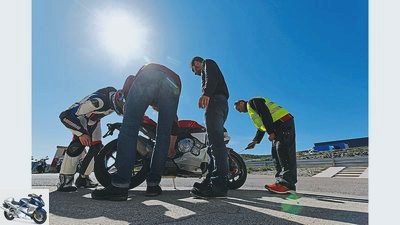
markus-jahn.com
13/18
Motorbike sports tires in the dimensions 120/70 ZR 17 and 190/55 ZR 17 in the test.
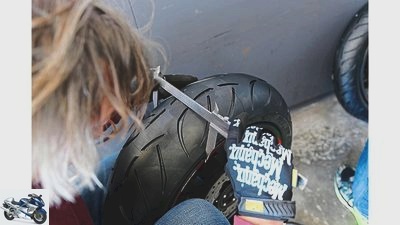
markus-jahn.com
14/18
Motorbike sports tires in the dimensions 120/70 ZR 17 and 190/55 ZR 17 in the test.
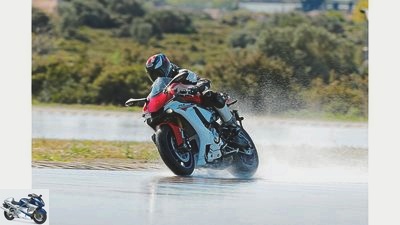
markus-jahn.com
15/18
Motorbike sports tires in the dimensions 120/70 ZR 17 and 190/55 ZR 17 in the test.
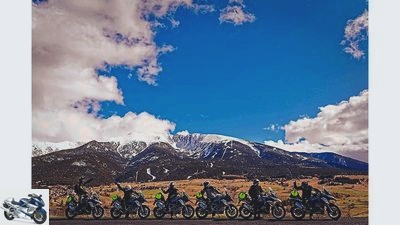
markus-jahn.com
16/18
Motorbike sports tires in the dimensions 120/70 ZR 17 and 190/55 ZR 17 in the test.
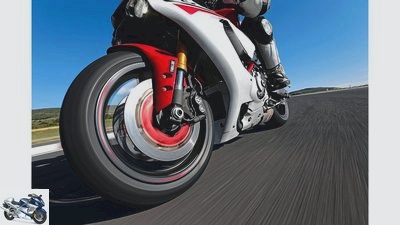
markus-jahn.com
17/18
Motorbike sports tires in the dimensions 120/70 ZR 17 and 190/55 ZR 17 in the test.
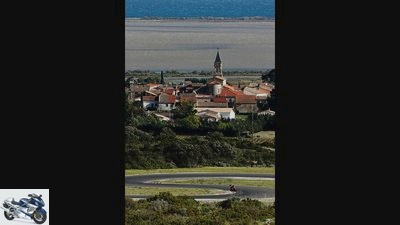
markus-jahn.com
18/18
Motorbike sports tires in the dimensions 120/70 ZR 17 and 190/55 ZR 17 in the test.
accesories
tire
Sports tires 120/70 ZR 17 and 190/55 ZR 17 in a comparison test
6 sports tires tested
120/70 ZR 17 and 190/55 ZR 17
The evolution of sports tires has reached an extremely high level. Above all, its broadband benefits are impressive: handiness in everyday life, stability on the racetrack, safety in the wet. Three new releases now want to raise the bar even higher. Is there really still something going on??
Jorg Lohse, Karsten Schwers
05/25/2016
Sports tires, which, depending on the manufacturer, are given glamorous epithets such as hyper or supersport, are extremely attractive for tire sellers. Less in terms of their performance. Rather, because sales are booming year after year in this segment. According to sales statistics, super-sporty bikes may be on the downturn, but the business with the matching rounds seems to be less affected. Market insiders report that this is mainly due to the fact that superbikers simply burn more rubber: “The typical sports driver visits the dealership at least once a season and has tires changed. Some even need two sentences a year ”, the sales manager of a large brand knows from years of experience:“ Touring drivers come much less often. ”This is also borne out by the figures that are reported annually to the European Tire Manufacturers Association (ETRM). Last year around 1.5 million motorcycle tires were sold in Germany. The top sellers are the (super) sporty profiles for the typical front wheel size of 120/70 ZR 17 with around ten percent share. A further 13 percent are added by the different rear wheel sizes from 160/60 to 190/55 ZR 17. For comparison: touring tires add up to around 19 percent at the front and rear. Not a little either, but sport wins!
Buy complete article
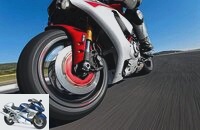
6 sports tires tested
120/70 ZR 17 and 190/55 ZR 17
10 pages) as PDF
€ 2.00
Buy now
It is understandable that the “Big Six” of the rubber scene always rush to develop new sporty profiles with great effort. On average, a new super sports model replaces its predecessor every four to five years. Should the sales figures worsen, a model revision marked with “Evo” or “Pro” could be postponed within this cycle. For the current season, Bridgestone, Conti and Pirelli three manufacturers have thoroughly revised their sports program and now want to heat up the established competition from Dunlop, Metzeler and Michelin in the second part of our 2016 tire test on a Yamaha R1. Let’s take a closer look at the old versus new duel.
Motorcycle sports tires tested in 2016
Dunlop Sportsmart 2: The sports tire has now been around three years old. In the further development of the original Sportsmart, not only the performance requirements of modern sports bikes were in the specifications. At the same time, with the second edition, the developers wanted to take account of the fact that the average age of motorcycles has now grown to over 14 years. These should also work with the Sportsmart 2. Left behind at our first major test appearance in 2014 Dunlop however, not a smart, let alone harmonious impression. Wet performance and wear values were pleasing on the BMW S 1000 RR, but the sports tire was far less convincing due to a certain annoyance on the racetrack and country road. After all, the Sportsmart 2 still landed in 4th place. In the current test on Yamaha’s R1, nothing significantly changed in terms of its basic appearance. But since it cannot play a strong card this year without a wear rating, the test for the Sportsmart 2 now ends in last place.
Metzeler Sportec M7 RR: The test debut could not have been more successful for the sports tire from the Munich brand. The new release of 2014 landed at number one straight away – so the predecessor M5, which had been abandoned in the end, was forgotten in one fell swoop. In the 2014 test, the M7 RR on the BMW Superbike impressed not only with its low wear values, but also with its precise handling and rich feedback. So it is ultimately no surprise that the picture is repeated in the current test constellation on the Yamaha R1. The only exciting question is: can the three newcomers make it, Metzeler to be removed from the throne? Now we can give the answer: no!
Michelin Pilot Power 3: Together with Dunlops Sportsmart the grandpa in the field. This Frenchman is now also entering his fourth season. In the master’s test in this category two years ago, it was in first place together with Metzeler’s M7. He scored above all with pleasant feedback in everyday life, excellent cross-country skiing qualities and – typical for the brand – an exorbitantly good wet performance. Only on the circuit you don’t want to get warm with the Power 3 at all – but now something of a tradition. So it’s no surprise that Michelin This year, too, the race track standings were the last to end with insufficient stability. Nor is it surprising that it still has the edge in the wet – and quite clearly. The fact that he only ends up in fifth place now has a lot to do with the new challengers.
Bridgestone S 21: With the BT 16 Pro, the Japanese have made a radical cut. Away from maximum stability, towards more handiness and everyday quality, especially on wet roads. The successor S 20 and the interim model S 20 Evo also hit this notch. The downside of the coin: high wear values and – which probably caused more stomach ache for the developers in the Far East – a not entirely convincing “high performance” on the racetrack, especially due to the somewhat too cautious feedback. Because at this point, the Japanese have now significantly improved on the S 21. The new sports tire from Bridgestone Drives much better in hard race mode than its predecessors: precise, neutral, stable, plus great feedback – that ennobles it with our racetrack recommendation. On the other hand, the performance on wet roads has decreased significantly compared to its predecessors. Which is why he does not get past fourth place overall.
Continental Sport Attack 3: The 2014 test clearly showed that Sport Attack number 2 was no longer up to date. The racetrack and country roads were still reasonably okay, but the Hanoverians waved the red lantern when it was worn out and in the rain. So up with number 3 on the R1. And lo and behold: With its super-handy character, the new Conti is the recommendation for sporty country road surfers – first place in this section makes that more than clear. And the wet driving characteristics must have been underlined in the specification sheet. With its new rubber compound, the Sport Attack 3 now provides plenty of adhesive reserves in curves and when accelerating. Makes a runner-up in the final score.
Pirelli Diablo Rosso III: In principle, with Numero tre, the Italians are continuing the line that is best known from the predecessor Rosso II and sister model Diablo Rosso Corsa – the fast line selection on the racetrack. And lo and behold: R1 and R III are in top form, which is why the Pirelli is our tip for hobby racers. And because the Rosso III is not afraid of water either, an Italian vice champion joins the German in our championship. Va bene, gli Azzurri?
Sports tires in the racetrack test
What if it’s really about what? For example, a best time on the circuit. Sports tires shouldn’t buckle on a trip to the racetrack. And this is how our test candidates present themselves on what was once a real Formula 1 track.
Sports tires, racetrack? Sounds logical at first. But wait! Ambitious cracks who want to change their tires for track days or for a hobby racing series have to resort to an even more uncompromising rubber. Each of the manufacturers tested here has at least one more suitable tire option for semi-professionals. For example Bridgestone the RS 10, Dunlop the D 212 GP Pro or Metzeler the Racetec RR. Most of these racing tires are also approved for road use, but they are primarily designed for time-saving on racetracks. The other side of the coin: adverse everyday conditions such as cold, rainy days are more torture than joy on the slippery rubbers. Our “normal” sports tires try to cover this, but this means that, conversely, that compromises have to be made on the racetrack. But they are definitely good enough to complete regular race training, a cornering school or the legendary perfection training of the MOTORRAD action team on the Nordschleife. All manufacturers continue to give special air pressure recommendations for racing, some of which differ significantly from the 2.5 (front) and 2.9 bar (rear) established in regular road use. However, these recommendations are not always spot-on Michelin. For the Power 3, the manufacturer specifies a very low 1.9 bar at the rear for racetrack operation. This makes our R1 almost impassable with a rear tire that is literally buckling away. Only when it is increased to 2.5 bar is there a little more stability, but the Michelin is still far from the performance of a Bridgestone, Metzeler or Pirelli.
Placement:
1. Bridgestone S 21
1. Pirelli Diablo Rosso III
3. Continental Sport Attack 3
3. Metzeler Sportec M7 RR
5. Dunlop Sportsmart 2
6. Michelin Pilot Power 3
Four of the six test candidates are engaged in an exciting head-to-head race on our racetrack. This is also proven by the equality of points and the minimal distance between the first placed and the pursuers. With the S 21, Bridgestone is again making a clear commitment to more sportiness – in comparison, the predecessor S 20 Pro plays in the second division. A particular strength of the S 21: its razor-sharp precision. Pirelli’s new Rosso III appeals with its extremely rich grip and top-notch stability, Contis Sport Attack 3 with its first-class handling, the Metzeler M7 RR with its balance.
Sports tires in the wet test
Sports tires and bad weather? In the meantime, this equation also works. But there are a number of differences in detail in this test chapter.
Sports tires and bad weather? In the meantime, this equation also works. But when it comes to the details, there are quite a few differences in this test section. Building a rain tire that also works on racing cars? Not really a problem. Anyone who has ever followed a bad weather race in MotoGP will be amazed at the lean angles that are actually possible on 260 hp bikes with the right tires. However, on such occasions it is also very impressive to see what happens to the tires when the rain suddenly stops and the rubbers are then literally rubbed on a dry track. For the tire developers it means finding exactly the right balance: wet grip, yes, but not at the expense of stability and durability. The magic agent is called silica, a type of silica that gives the rubber compound a certain suppleness in the rain (which is synonymous with cold). Equally important: the design of the border area over which sliders can be safely caught.
Placement:
1. Michelin Pilot Power 3
2. Metzeler Sportec M7 RR
3. Continental Sport Attack 3
3. Pirelli Diablo Rosso III
5. Bridgestone S 21
5. Dunlop Sportsmart 2
Every year … a Michelin is at the top in this category. When it comes to optimal rain performance, the French tires are still the measure of all things. This is also the case with the Power 3, which impresses with great handiness and ample adhesive reserves when wet. But the places behind are also worth mentioning. The Metzeler M7 RR follows closely with similar handiness, while Pirelli’s Rosso III impresses with first-class braking distances. And with the Sport Attack 3, Conti shows a significant leap in development compared to its rather water-shy predecessors.
Sports tires in country roads and everyday tests
Nordschleife, Hockenheim, Sachsenring. Sounds good, but it’s not in the logbook every day. All the more often the pleasurable lap on the house route or winding weekend trips. What do sports tires do in everyday life on the country road?
What holds out on the racetrack will definitely be sufficient for everyday use on country roads … Sounds like a logical thesis, but puff cake. In public road traffic, the tires are challenged in a completely different way than when they are brought to the limit with appropriate coordination (reduced air pressure, well heated) during circuit operation. Here, too, tire developers have to do a balancing act. When racing, the rubbers can be quickly heated to the ideal temperature, where they then build up a good grip. This is much more difficult to achieve with the everyday fast curve swing. Assuming the streets are empty, this may still work to some extent in midsummer, but the typical motorcycle season also includes many cooler weeks. In the test field, it is usually the all-rounders who can push themselves to the top who do not quite come close to the very pointedly configured sports tires in racing. The table evaluation shows that the criteria that separate the wheat from the chaff in race mode are easily met on the country road. In terms of cornering stability and grip reserves when accelerating or in an inclined position, experience has shown that there are few differences in all test pairs. Much more important, however, is how the tire behaves in the warm-up phase (“cold running”). In connection with this, there are also the larger differences in the evaluation chapters “Steering precision” and “Handiness”.
Placement:
1. Continental Sport Attack 3
1. Metzeler Sportec M7 RR
3. Bridgestone S 21
4. Michelin Pilot Power 3
4. Pirelli Diablo Rosso III
6. Dunlop Sportsmart 2
Ring exchange on the country road? With a view to the race standings, the final balance of our country road lap shows that the runner-up in the racetrack have the edge in everyday life. But Metzeler and Conti are not together in first place because they are more or less the same. In the best Conti tradition, the Sport Attack 3 is an extremely agile, light-footed tire – a real curve hunter. The M7 RR, on the other hand, also scores here with its superb balance in all individual ratings. With a similar design, the Bridgestone S 21 can position itself in third place.
This is how MOTORRAD tests
With a Yamaha YZF-R1, all six tire pairs in the dimensions 120/70 ZR 17 and 190/55 ZR 17 were functionally tested at the Goodyear-Dunlop test site in Mireval in the south of France. Driving in the rain can be simulated on a constantly watered track, an old Formula 1 track (“Carland”) is perfect for assessing the rubbers under racing and everyday conditions. And these are our main criteria:
Handiness …
… is the steering force to tilt the machine and keep it in line in alternating curves.
Limit range behavior * …
… stands for the controllability of the tire at the limit. Tests on wet and dry roads.
Liability / acceleration * …
… describes the lateral guidance and power transmission in corners of different speeds (wet / dry).
Liability / inclination * …
… is the lateral guidance in maximum inclination on wet and dry asphalt. A tightrope walk that is only possible on a closed route.
Steering precision * …
… in passages of different speeds with complicated curve radii. Provides information about whether the motorcycle is following the desired course, which is specified by the steering forces, or whether clear line corrections are required.
Cornering stability …
… tests the build-up in (alternating) curves and on bumps. Is tested in different modes (solo / with pillion passenger) and in a great lean angle when accelerating.
Straight-line stability …
… is tested at high speed. Does the motorcycle remain stable on course or does the commuting disrupt the journey??
Setup moment …
… refers to straightening up when braking in an inclined position. This reaction must be balanced out with a counterforce (pressure) on the inside of the handlebar end.
Filling pressure in the test
2.5 bar at the front, 2.9 bar at the rear.
* The sections marked with an asterisk can be transferred to motorcycles that have a similar geometry to the Yamaha YZF-R1
MOTORCYCLE final scoring
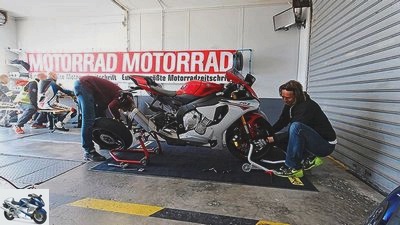
markus-jahn.com
Motorbike sports tires in the dimensions 120/70 ZR 17 and 190/55 ZR 17 in the test.
We drove three test laps. And each had it all. One: full incline, maximum load. The other swinging through the curves. The third: on a rather slippery floor. Which sports tire manages the balancing act?
Let’s roll up the field from behind. Dunlops Sportsmart 2 is a tire that you literally have to warm up with. In all chapters there was a pronounced inertia that stood in the way of the potential of our test bike Yamaha R1. In fifth place of the Michelin. Overall, beaten, but if you want to continue to pull the best in the wet, you can not ignore the Power 3. Bridgestone’s new S 21 just missed the podium. In contrast to its predecessors, it is now again aiming for a convincingly strong racing performance, which is at the expense of the balance. The same applies to the second new release, here in second place: The Pirelli Diablo Rosso III also clearly scores with its one-of-a-kind racing genes. Both rubbers are recommended for those who want to lose time. The third new product in this test is also runner-up. Contis Sport Attack 3 is a great country road tire with significant growth in wet conditions. And in first place: Metzeler’s M7 RR. Why? He is and remains an all-rounder!
Placement:
1. Metzeler Sportec M7 RR
2. Pirelli Diablo Rosso III
2. Continental Sport Attack 3
4. Bridgestone S 21
5. Michelin Pilot Power 3
6. Dunlop Sportsmart 2
The detailed scores, including measured values, are available in the booklet or as a PDF for download.
Bridgestone S 21
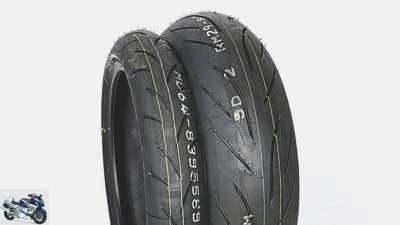
mps studio
Buying tip for sports tires: Bridgestone S 21.
Weight: 4.2 kg at the front, 6.9 kg at the rear
Country of Manufacture: Japan
Info / approvals: Bridgestone Germany, Tel. 0 61 72/40 81 73, www.bridgestone-mc.de
valuation
Race track (air pressure * v./h .: 2.2 / 2.0 bar, 96 points, 1st place): Compared to its predecessor, the S 20 Evo, the Bridgestone S 21 again has more (racing) sports genes implanted. On the racetrack, the Japanese convinces with quick feedback, precise steering behavior, a lot of grip and high stability. Commendable: This consistently positive overall impression is retained even after a few brisk laps – hence our recommendation for race training.
Landstrasse (90 points, 3rd place): The Japanese want to be brought up to temperature for a few turns before they convince in everyday sporting use with jagged feedback and crisp precision.
Wet test (83 points, 5th place): The sharpened profile towards the racetrack is clearly at the expense of the good rain properties that the S 20 Evo still had.
Conclusion: Athletes who need a firm rubber for bold gas on the home track and during race training will be very satisfied with the Bridgestone S 21. However, the Bridgestone does not convince on cold, wet days.
MOTORCYCLE rating: 269 points – 4th place
Continental Sport Attack 3
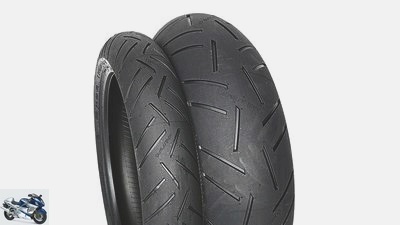
mps photo studio
Continental Sport Attack 3.
Weight: front 4.3 kg, rear 6.5 kg
Country of Manufacture: Germany
Info / approvals: Continental tires, Tel. 05 11/9 38 01, www.conti-moto.de
valuation
Race track: (air pressure * v./h .: 2.1 / 1.8 bar, 93 points, 3rd place) Like the predecessor model Sport Attack 2, the number 3 scores with its immediate response behavior – trust is there right away. The Conti also pleases on the racetrack with its handiness and pleasant feedback. When accelerating out of corners strongly, however, there is a lack of grip reserves and stability, especially with a view to strong competitors (Bridgestone, Metzeler and Pirelli).
Landstrasse: (92 points, 1st place) Here the Conti is in its element. The Sport Attack 3 already responds extremely well when cold. With its handiness, steering precision and self-damping it deserves to be at the top.
Wet test: (86 points, 3rd place) A big step forward. With considerable reserves of grip, the Sport Attack 3 can clearly set itself apart from its predecessor in the rain.
Conclusion: The sports tires from Conti have always impressed on country roads. The Sport Attack 3 has now improved significantly in quality even when it is wet. Together with decent race results, that makes 2nd place.
MOTORCYCLE rating: 271 points – 2nd place
Dunlop Sportsmart 2
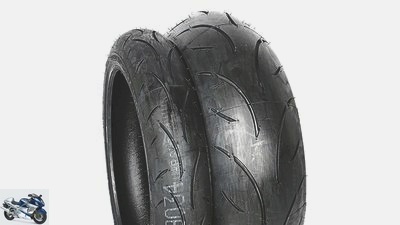
mps photo studio
Dunlop Sportsmart 2.
Weight: front 4.4 kg, rear 7.2 kg
Country of Manufacture: France
Info / approvals: Goodyear Dunlop Tires Germany, Tel. 0 61 81/68 01, www.dunlop.de
valuation
Race track: (air pressure * v./h .: 2.5 / 2.5 bar, 84 points, 5th place) Compared to the rest of the test field, the Sportsmart needs a long start-up time before it provides good feedback in terms of adhesive reserves. Once brought up to temperature, the handiness and grip increase noticeably, but they are still well behind the competition. It is noticeable that curves with comparatively wide arcs have to be negotiated. When accelerating hard, the Dunlop becomes very restless due to flexing movements on the rear wheel.
Landstrabe: (84 points, 6th place) In everyday use, it is even more difficult to get the Dunlop up to operating temperature. Feedback, steering precision and handiness suffer as a result.
Wet test: (83 points, 5th place) The detention reserves are okay, but indolence costs points even on wet roads.
Conclusion: Neutrality, handiness, precision – the Sportsmart 2 is not particularly blessed with these properties. Which can not only be felt on the racetrack, but runs like a red thread through everyday life.
MOTORCYCLE rating: 251 points – 6th place
Metzeler Sportec M7 RR
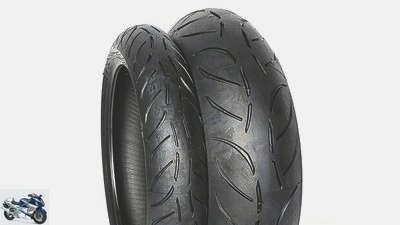
mps photo studio
MOTORRAD test winner: Metzeler Sportec M7 RR.
Weight: 4.1 kg at the front, 7.0 kg at the rear
Country of Manufacture: Germany
Info / approvals: Pirelli Germany, Tel. 0 89/14 90 83 02, www.metzelermoto.de
valuation
Race track: (air pressure * v./h .: 2.5 / 2.7 bar, 93 points, 3rd place) With exemplary steering precision, pleasant feedback and full stability, the M7 RR draws attention to itself on the racetrack. The stability also decreases after some-
after a sharp lap. In terms of agility, however, the Conti is slightly superior to it.
Landstrasse: (92 points, 1st place) In everyday use on winding country roads, the Metzeler is a real benchmark, continues to impress with very good feedback, direct response behavior even when cold and low set-up torque.
Wet test: (88 points, 2nd place) And the M7 RR doesn’t buckle in the rain either. Although it has to rank behind the Power 3 in a direct comparison, grip and extreme behavior are at a top level.
Conclusion: The Metzeler is and remains a real universal talent for sporty types of drivers – whether on the home track or on the racetrack. Its balance makes it rightly in first place.
MOTORCYCLE rating: 273 points – 1st place
Michelin Pilot Power 3
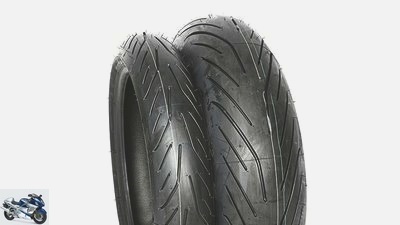
mps photo studio
Michelin Pilot Power 3.
Weight: 4.2 kg at the front, 6.6 kg at the rear
Country of Manufacture: Spain
Info / approvals: Michelin Reifenwerke, Tel. 07 21/53 00, motorrad.michelin.de
valuation
Race track: (air pressure * v./h .: 2.1 / 1.9 bar, 76 points, 6th place) On the circuit, the ride on the Michelin-powered R1 is more like a queasy rollercoaster ride. At the beginning, feedback and nimble handling are appreciated, but the good feeling quickly evaporates when the rear tire literally buckles when accelerating out of bends. Even with the rear air pressure increased to 2.5 bar, the bottom line is that the Power 3 remains too unstable in racing mode.
Landstrabe: (89 points, 4th place) Sporty year-round pilots will benefit from the good cold running properties of the Power 3. But if you dig between your teeth with a knife, you will miss some stability.
Wet test: (92 points, 1st place) The young competitors have clearly caught up in the rain, but Michelin is and remains number one on wet roads.
Conclusion: In principle, the Power 3 is the cleaner in the area. Only when things get inhospitable do the super sporty Michelin men really get into a good mood. But if you let it rip in top weather, you won’t have any real joy.
MOTORCYCLE rating: 257 points – 5th place
Pirelli Diablo Rosso III
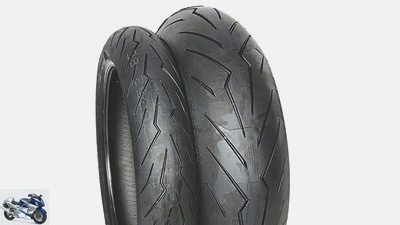
mps photo studio
MOTORCYCLE purchase tip: Pirelli Diablo Rosso III.
Weight: 4.2 kg at the front, 6.6 kg at the rear
Country of Manufacture: Germany
Info / approvals: Pirelli Germany, Tel. 0 61 63/7 10, www.pirellimoto.de
valuation
Race track: (air pressure * v./h .: 2.5 / 2.7 bar, 96 points, 1st place) R for Rosso for racetrack. Even in its third edition, the Pirelli sports tire remains the recommendation for ambitious superbike pilots. Retention reserves and stability are at a top level. In terms of precision, however, the Rosso III has to line up just behind the S 21. Accelerating out of corners, on the other hand, is equivalent to a brilliant parade with first-class stability.
Landstrasse: (89 points, 4th place) In everyday use the Pirelli can keep up with the Conti or Metzeler, but it has to accept slight criticism for its minimally noticeable unwieldiness.
Wet test: (86 points, 3rd place) With a significantly better grip pad than its predecessor, the Rosso III can now also impress on wet roads.
Conclusion: Those who value a lot of sportiness when buying tires are welcome to choose the new Rosso III. Mainly because this Pirelli still cuts a fine figure even in somewhat more adverse conditions.
MOTORCYCLE rating: 269 points – 4th place
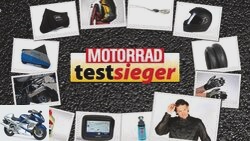
accesories
The best motorcycle accessories
Overview of motorcycle accessory tests
read more
Related articles
-
Sports tires 120-70 ZR 17 and 190-55 ZR 17
Jahn 49 pictures Jahn 1/49 Johannes Muller (30), MOTORCYCLE intern: As the youngest, he moves the oldest iron: CB 750 Four. Jahn 2/49 Lock-it tank bag…
-
Six sports tires in the sporty country road and wetness test
Markus Jahn, mps photo studio 15th pictures Markus Jahn, mps photo studio 1/15 In the fourth part of our tire test, six current sports tires have to face…
-
Sports tires in a comparison test
fact / Joachim Schahl 17th pictures fact 1/17 The different criteria of four different rubbers need to be neatly noted. Later confusion excluded. fact…
-
Test winner sports tires (MOTORRAD 13-2013)
Jahn 23 pictures Jahn 1/23 The 2013 MOTORRAD sports tire test. Jahn 2/23 The sports tires on the country road and motorway. Jahn 3/23 Where did the…
-
Sports tires in the 2013 tire test
Jahn 23 pictures Jahn 1/23 The 2013 MOTORRAD sports tire test. Jahn 2/23 The sports tires on the country road and motorway. Jahn 3/23 Where did the…
-
Enduro tires 120-70 R 19 and 170-60 R 17 in the product test
markus-jahn.com 34 pictures markus-jahn.com 1/34 On the way tip: on towel-wide single tracks through rustic forests, in between winding Carrera tracks,…
-
Test winner sports tires (MOTORRAD 10-2014)
mps studio accesories tire Test winner sports tires (MOTORRAD 10/2014) Test winner sports tires 120/70 ZR 17 and 190/55 ZR 17 (MOTORRAD 10/2014) Metzeler…
-
Touring tires 120-70 ZR 17, 180-55 ZR 17 in the test
markus-jahn.com 58 pictures markus-jahn.com 1/58 In the wet test, the tires beat quite differently. markus-jahn.com 2/58 Givi holding system “Tanklock”:…
-
Six super sports tires in a comparison test
markus-jahn.com 16 pictures markus-jahn.com 1/16 When it is wet, there is only a fine line between grip and take-off. Good skins offer a wide range of…
-
Tire test 2013: touring tires 120-70 ZR 17, 180-55 ZR 17
Jahn 20th pictures Jahn 1/20 Tire test 2013: 6 touring tires of the dimensions 120/70 ZR 17, 180/55 ZR 17. Jahn 2/20 The same conditions for everyone:…